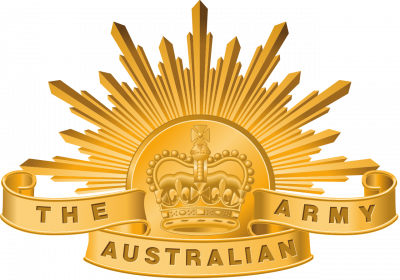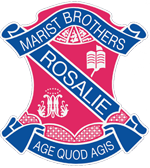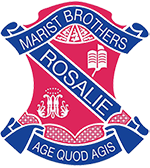
Marist Rosalie Servicemen - Active Duty
☨ Killed in Action ٭ Active Service Δ Hazardous Service
| Ainslie | HD | ☨ | Andolaro | A | Δ | Battley | LF | * |
| Bauer | JE | * | Begley | CD | * | Biscoe | RA | * |
| Boland | PB | * | Burke | EG | ☨ | Butler | JJ | * |
| Carmichael | P | * | Cave | SM | * | Comerford | JM | ☨ |
| Corkran | TJ | * | Crane | MB | * | Crocker | CW | * |
| Farrell | KT | Δ | Finlayson | GP | * | Foley | PR | * |
| Gaffney | D | * | Gallagher | FJP | * | Gallagher | KG | * |
| Golonski | SBJ | * | Graham | WJ | * | Hanlon | EF | * |
| Hayes | JJ | * | Iselin | BC | * | Iselin | KJ | * |
| Jackson | JE | ☨ | Kuzba | FJ | * | Lee | BF | * |
| Lindgren | DB | * | Luton | VD | ☨ * | Macdonald | HV | * |
| Maloney | EJ | * | McCosker | BJ | * | McCosker | TG | * |
| McCosker | V | * | McGoldrick | LN | ☨ | McLoughlin | CT | ☨ |
| Moss | MF | * | Myers | LN | * | O’Donohue | PF | ☨ |
| O’Reilly | JP | * | Pye | RL | * | Reid | PH | * |
| Rodger | MG | * | Rooney | KM | ☨ | Rosenstengel | RD | * |
| Rynne | LK | * | Sly | AW | * | Steel | MA | * |
| Thomas | WV | * | Ward | MD | * |
- The Ode -
The Ode comes from For the Fallen, a poem by the English poet and writer Laurence Binyon and was published in London in the Winnowing Fan; Poems of the Great War in 1914. The verse, which became the League Ode, was already used in association with commemoration services in Australia in 1921.
“They shall grow not old, as we that are left grow old;
Age shall not weary them, nor the years condemn.
At the going down of the sun and in the morning
We will remember them.”
Each year after Anzac Day and Remembrance Day debate rises on the word ‘condemn’ or ‘contemn’. The Ode used is the fourth stanza of the poem For the Fallen by Laurence Binyon and was written in the early days of World War One. By mid September 1914, less than seven weeks after the outbreak of war, the British Expeditionary Force in France had already suffered severe casualties. Long lists of the dead and wounded appeared in British newspapers. It was against this background that Binyon wrote For the Fallen. The poem was first published in The Times on 21 September 1914 using the word ‘condemn’. Some people have suggested that the use of ‘condemn’ in The Times was a typographical error. However, The Winnowing Fan, published a month or two later and for which Binyon would have had galley proofs on which to mark amendments, ‘condemn’ was again used.
The British Society of Authors, executors of the Binyon estate, says the word is definitely ‘condemn’, while the British Museum, where Binyon worked, says its memorial stone also shows ‘condemn’. Both expressed surprise when told there had been some debate about the matter in Australia. The condemn/contemn issue seems to be a distinctly Australian phenomenon. Inquiries with the British, Canadian and American Legions revealed that none had heard of the debate.
‘Contemn’ is not used in Binyon’s published anthologies and the two volumes set, Collected Poems, regarded as the definitive version of Binyon’s poems, uses ‘condemn’. The Returned and Services League handbook shows ‘condemn’ and a representative of the Australian War Memorial said it always used ‘condemn’ in its ceremonies.
***
We are constantly looking for Past Students or Teachers from Marist College Rosalie who were Australian Defence Force personnel and performed active service in any branch of the armed forces in all conflicts.
We would be honoured to add their name to the Rosalie Honour Roll.
Any information you have on family members we would be grateful to receive their details. Please contact Brian Iselin by telephone or email.
Brian Iselin: (07) 5471 2206
Email: abi240@bigpond.com
OR write: 23/21 Gracemere Blvd, Peregian Springs, QLD 4573

